If you’ve been wondering what to plant in those less-than-sunny spots, you’re in for a treat. In this guide, we will explore various evergreen plants that thrive in part shade, looking closely at each one’s characteristics, benefits, and care requirements.
Azalea
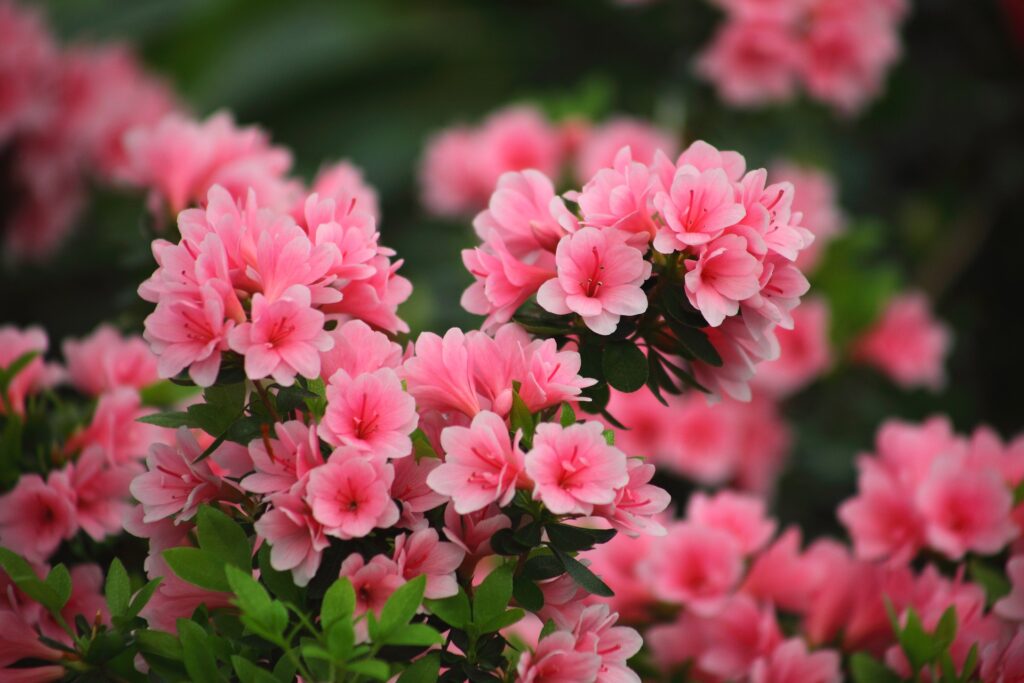
Azaleas are a stunning addition to any garden, particularly in partial shade, where their beautiful blooms can shine without the harsh effects of direct sunlight. These flowering shrubs belong to the Rhododendron genus and are known for their vibrant and colorful blossoms that appear in spring. They thrive in well-drained, acidic soils and prefer moist conditions, making part shade not just acceptable, but ideal for their growth.
Incorporating azaleas into your landscape provides year-round interest. While their flowers command attention in the spring, their glossy green leaves create a lush backdrop throughout the rest of the year. There’s a diverse array of species and cultivars to choose from, ranging in size and bloom color, which allows for flexibility in garden design. Additionally, azaleas are generally resistant to deer, making them a resilient choice for more challenging environments.
Boxwood

When it comes to evergreen structure and formality in the garden, boxwood (Buxus spp.) stands out. These shrubs are known for their dense, compact growth and can be shaped into various forms, making them perfect for hedges, borders, or topiary. Boxwoods thrive in partial shade and are adaptable to a variety of soil types, which makes them quite versatile.
This shrub’s rich green foliage provides a classic backdrop for other seasonal blooms, allowing other plants’ colors to pop. Boxwood’s slow growth rate means it won’t require constant reshaping, making it an easy-to-care-for choice. Additionally, their natural resistance to pests adds to their appeal as a low-maintenance ingredient in your landscape design. Whether used to frame a garden bed or as standalone specimens, boxwoods lend an air of sophistication to any space.
Camellia
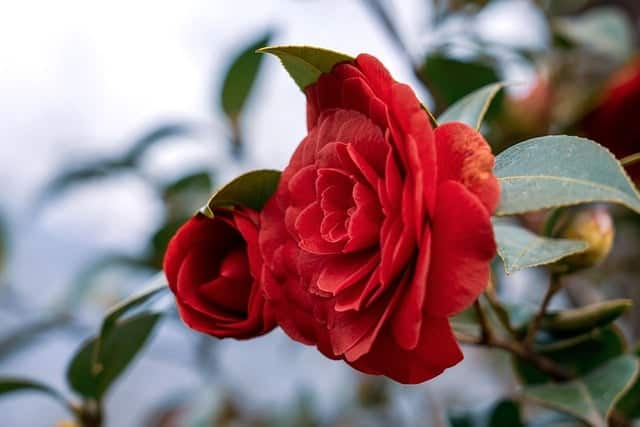
Camellias are the epitome of elegance in shaded gardens. These evergreen shrubs are celebrated for their exquisite, rose-like blooms that appear in late winter to early spring, providing a much-needed burst of color as winter wanes. They prefer partial shade, particularly in the afternoon, which protects them from the harsh sun that can scorch their delicate petals.
Camellias thrive in acidic, well-drained soils and can grow into impressive specimens over time, producing lush green leaves that enhance the garden’s overall texture. With varieties that bloom in shades of white, pink, and red, they can be strategically placed to create a stunning color palette. Camellias also support a variety of pollinators, making them not just visually appealing but beneficial for local ecosystems.
Daphne
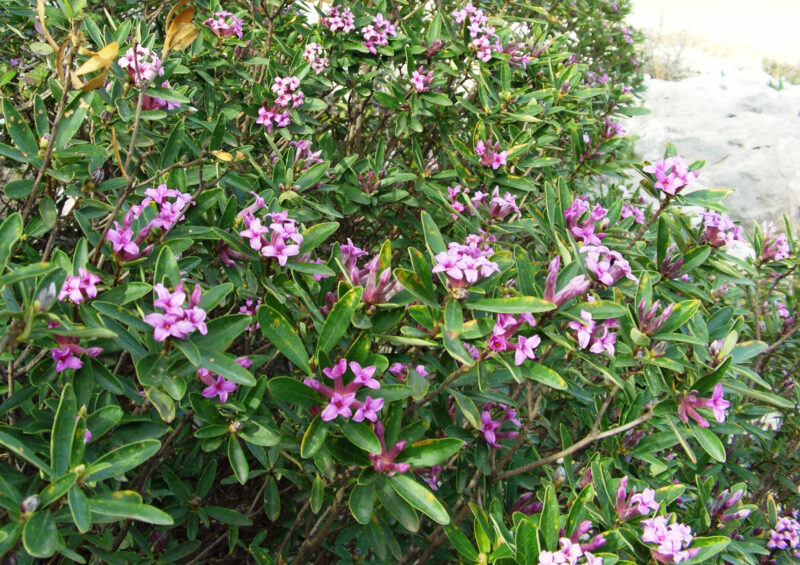
Daphne is a genus of flowering shrubs that is revered for its intoxicating fragrance and ornamental appeal. Often found in woodland settings, these plants are perfectly suited for part shade, where their delicate flowers exude tantalizing scents in early spring. The most well-known species, Daphne odora, produces fragrant pink or white blooms that attract butterflies and other pollinators.
Daphne prefers well-drained, slightly alkaline to neutral soils and thrives in moist conditions. It’s important to note that this plant can be a challenge to grow; however, the reward is well worth the effort. Once established, they exhibit a compact growth habit and are quite resilient. Daphne can add a layer of elegance and fragrance to shaded garden nooks, creating an enchanting atmosphere.
Holly
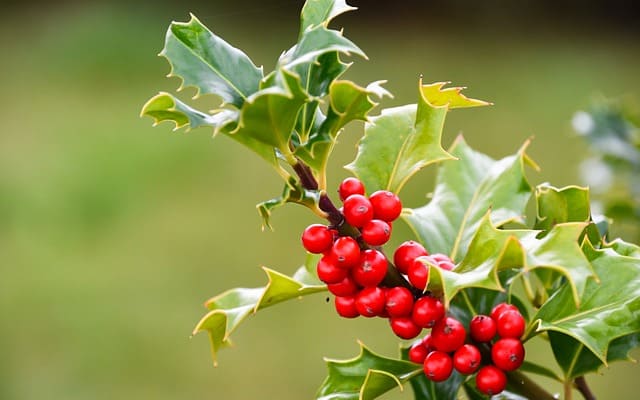
Hollies are classic evergreen plants that provide year-round interest, especially in shaded areas. With their spiky leaves and vibrant berries, these shrubs add a dynamic visual element to any garden design. Several varieties, including Ilex crenata and Ilex aquifolium, thrive in part shade, making holly a perfect choice for areas with filtered sunlight.
The berries on female holly plants are particularly striking and attract birds, adding an ecological benefit to your landscape. Furthermore, hollies are often used in holiday decorations, making them a beloved choice for seasonal festivities. They can also serve as natural privacy screens, providing shelter and security in your garden. With their rich history and cultural significance, holly shrubs bring both beauty and utility to shady spaces.
Juniper
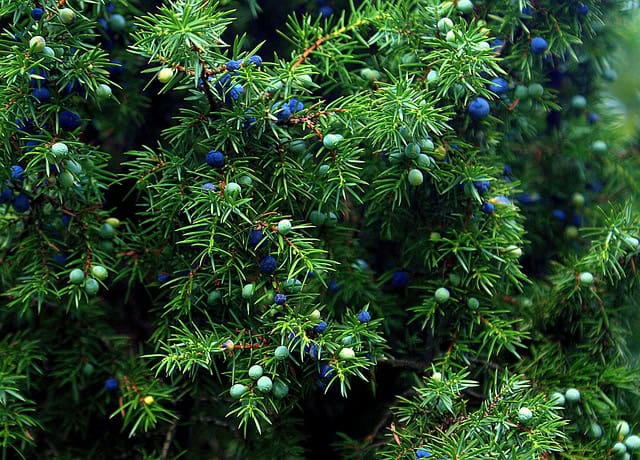
Junipers are versatile, hardy evergreens that can fit into a variety of garden settings, including those that experience part shade. These coniferous shrubs and trees come in many forms, from ground covers to upright varieties, making them suitable for various landscaping needs. While many junipers prefer full sun, certain species, like Juniperus chinensis, can thrive in some shade.
Junipers are incredibly low-maintenance once established; they are drought-tolerant and resistant to pests and diseases. Their attractive foliage—ranging from bright green to deep blue-green, and even gold—can add striking color to your landscape year-round. Moreover, their often aromatic foliage provides a lovely scent when brushed against, enhancing the sensory experience of your garden. Forming a backdrop for flowering plants, junipers easily assimilate with other garden elements for a natural vibe.
Pieris
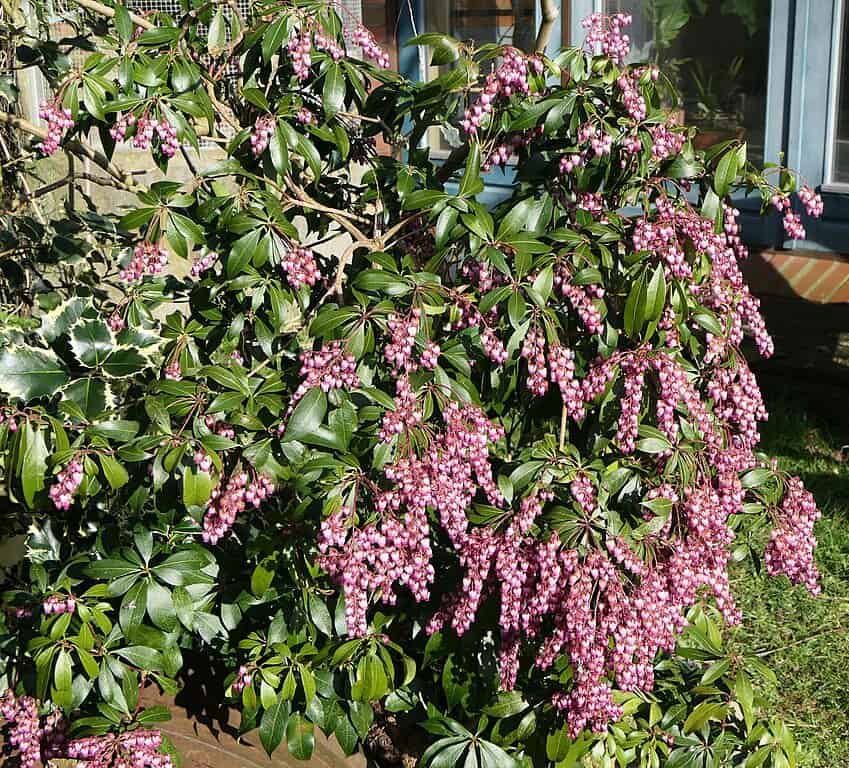
Pieris, often referred to as andromeda or lily-of-the-valley shrub, is a charming evergreen that thrives in part shade. Known for its graceful appearance and stunning spring flower clusters, Pieris japonica is particularly popular among gardeners. In early spring, this shrub showcases drooping clusters of small, bell-like flowers that can range from white to pink, attracting valuable pollinators.
Beyond its seasonal flowers, Pieris offers year-round appeal with its glossy, deep green leaves that sometimes feature a reddish tint as they emerge in spring. It tends to prefer acidic soils and requires consistent moisture, making it well-suited for shaded areas that retain some moisture. Pieris can make a lovely specimen plant or hedge, and its combination of beauty and resilience gives it a prominent place in part-shade gardens.
Rhododendron

The Rhododendron genus is synonymous with lush gardens and offers numerous options for shaded areas. With large, stunning blooms appearing in a plethora of colors, these plants can create a spectacular display in any landscape. Many species and hybrids thrive in partial shade, where they can flourish away from direct sunlight’s intensity.
Rhododendrons are also known for their impressive foliage; their thick, leathery leaves provide an attractive backdrop throughout the year. They thrive in well-drained, acidic soils and require regular watering to maintain health. Their ability to attract wildlife, especially pollinators, adds to their appeal. Furthermore, rhododendrons can serve as impactful focal points within the garden or be grouped to form stunning hedgerows that bring dimension and color to shaded areas.
Skimmia
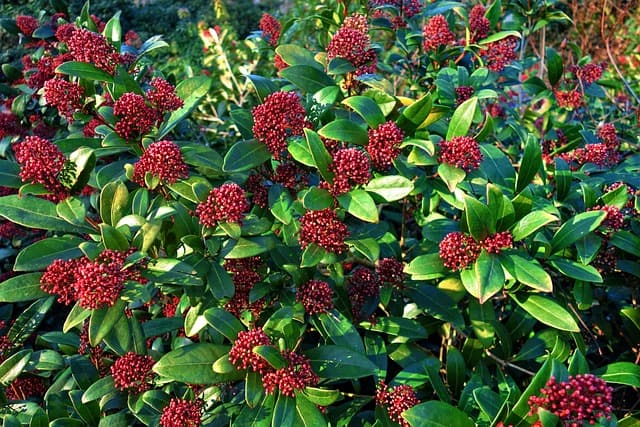
If you’re looking for an evergreen that offers both beauty and low maintenance, skimmia is an ideal choice for part shade gardens. Known for its fragrant flowers and glossy leaves, skimmia comes in both male and female varieties, with the female producing attractive red berries in winter—adding a pop of color at a time when many other plants are dormant.
Skimmia prefers moist, well-drained soils and is tolerant of various soil types, making it an easygoing plant in shaded conditions. The white or pink flowers bloom in late winter to early spring, providing a much-needed reprieve from the dreariness of winter. Whether used as a ground cover, border, or standalone specimen, skimmia brings charm and interest to any landscape.
Yew
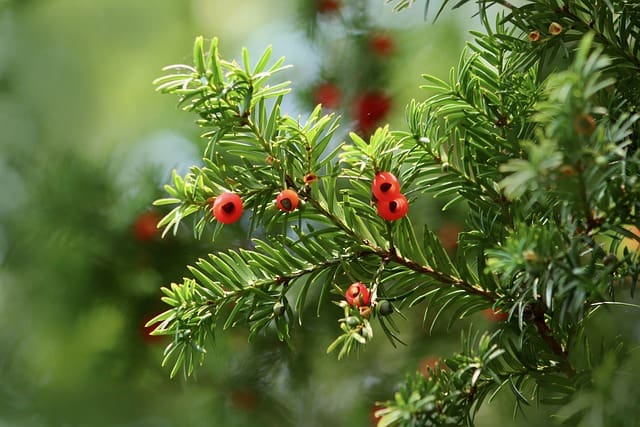
Yews are classic, evergreen plants loved for their versatility and resilience. Thriving in partial shade, these coniferous shrubs can be shaped into hedges or left to grow naturally. With their dark green, needle-like leaves, yews add depth and texture to landscapes, serving as a reliable privacy screen or backdrop for flowering plants.
These evergreens can adapt to a range of soil conditions, and their ability to tolerate pruning makes them easy to maintain. Yews produce red berries in the fall, although it’s essential to note that while they are visually appealing, the berries and foliage are toxic if ingested. Yews also have a historical significance, often found in traditional gardens and landscapes, lending a sense of timelessness to your gardening efforts.





